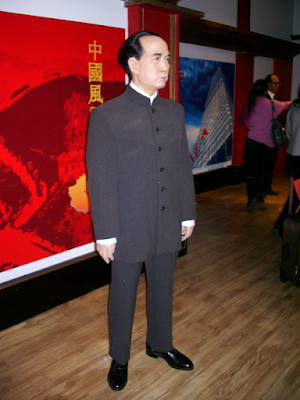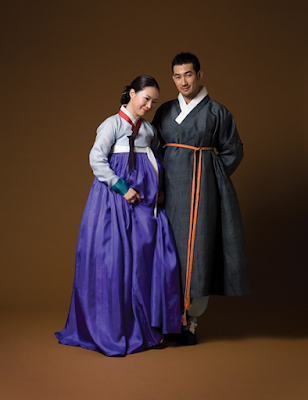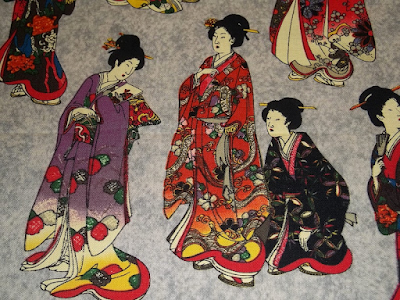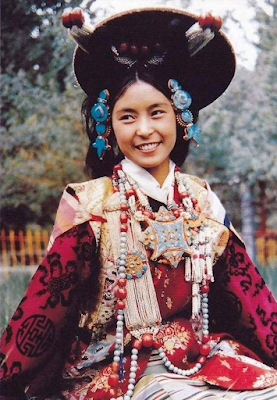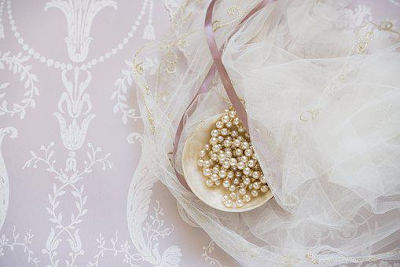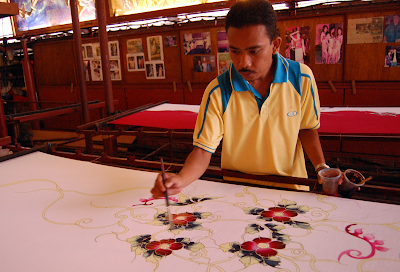Featured
- Get link
- X
- Other Apps
HISTORY OF DRESS IN EAST ASIA
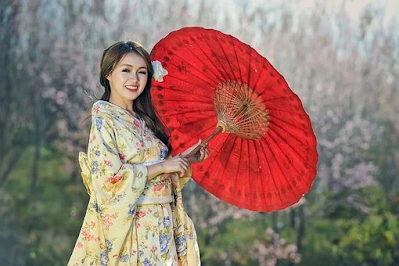 |
| Ethnic East Asian Dresses |
What Is The History Of Dress In East Asia?
East Asia include the current nations of China, Korea, Japan, and Vietnam (the latter of which may also be considered part of Southeast Asia), as well as surrounding parts of Inner Asia that have traditionally been part of the Chinese empire and have been highly impacted by China's culture.
 |
| Traditional Manchurian Dress |
Manchuria (now China's three northeastern provinces):
- Mongolia (includes China's Inner Mongolian Autonomous Region and the autonomous Republic of Mongolia);
- East Turkestan (now China's Xinjiang);
- and Tibet are among these territories (now the Tibet Autonomous Region of China, plus adjacent areas of the provinces of Qinghai, Sichuan, and Yunnan).
 |
| Manchurian Women |
China saw itself as the center of the globe, the fountainhead of culture, and a beacon of civilization to surrounding peoples because of its size, population, and riches.
People in the surrounding area did not always agree with this evaluation, but they could not and frequently did not want to be influenced by Chinese culture.
Silk's significance in East Asian clothing history is both proof and metaphor for China's cultural dominance over the area.
 |
| Silk's Influence In East Asian Clothing |
After then, silk, which had been manufactured in areas of China since at least the third millennium B.C.E., became the preferred textile material of China's aristocracy (commoners wore hempen cloth in ancient times, cotton increasingly after about 1200 C.E.).
In the early centuries C.E., both the technique of silk manufacturing and the cultural desire for wearing silk were spread from China to Korea, Japan, and Vietnam.
Beginning in the first century B.C.E., silk fabric (but not silk technology, whether by accident or industrial espionage) was regularly and in enormous quantities sent from China to Central and Western Asia over the Silk Route.
The cultural divide is a long-standing one.
 |
| East Turkestan Clothing |
The easternmost members of the Celtic people were weaving woolen twill fabric in plaid patterns in East Turkestan (now Xinjiang Province, China) about 1000 B.C.E., indistinguishable from those woven by Celts in Europe at the time.
 |
| East Turkestan |
The rulers of China's Western Zhou Dynasty (1046–781 B.C.E.) dressed themselves in lavishly patterned silks produced in royal factories a thousand kilometers to the east, in their capital city near present-day Xi'an.
The boundary between Chinese culture and Inner Asian culture might therefore be seen as a barrier between silk and wool, with Chinese silk helping to facilitate commerce between the two civilizations.
History Of Dress In China.
For both sexes, the basic clothing in China was a robe-like or tunic-like wrapping garment.
Elites wore silk robes that were wrapped around the body and secured at the waist with a belt.
These robes were either long enough to eliminate the need for lower clothing or were shorter (e.g. thigh length) and worn over pants or a skirt.
Trousers and skirts were not gender-specific, and both men and women wore them.
Both sexes considered it socially necessary to wear their hair in a topknot or other dressed manner, and to cover it with a head covering or cap.
The dress of the upper crust was made of brightly colored patterned silk material.
During the Tang Dynasty (618–907), when a rich and cosmopolitan imperial society fostered consumerism and emulation, and novelty was given by cultural influences from Persian and Turkic peoples through the Silk Route, women's fashion saw a period of rapid development.
Elite men's clothes was typically highly bright in ancient times, but subsequent eras saw men's clothing become more gloomy and plain-colored.
 |
| Traditional Chinese Dragon Robe |
The development of the "dragon robe" for use as court attire, beginning in the late Song Dynasty (twelfth century), countered this tendency toward plainer clothes.
Short robes or jackets were worn over pants or leggings by commoners; women wore skirts, while males wore just a loincloth as a lower garment, especially when conducting hard agricultural labor.
From the late first century B.C.E. onwards, cavalry became a significant aspect of the Chinese military, and cavalrymen often wore short wrapped coats or short robes over pants.
The late imperial Chinese dragon robes offered accurate information about the status of individuals who wore them via color and pattern elements.
Mandarin squares, embroidered fabric badges that identified a wearer's civil service rank and were worn on the front and back of official robes, provided similar information to lower-ranking officials.
After the imperial era ended in 1911, Chinese fashion altered dramatically.
The Sun Yat-sen suit was a new kind of men's clothing that was constructed on the basis of European military uniforms and gained broad acceptance; it consisted of a jacket with a high, stiff "mandarin" collar, four pockets, and a buttoned front, as well as matching fabric pants.
In the 1920s and 1930s, a new women's garment known as the qipao or cheongsam emerged in Shanghai and other Chinese cities, based on a restyling of China's final imperial dynasty, the ethnically Manchu Qing Dynasty.
The Sun Yat-sen suit developed into the ubiquitous blue cotton Mao suit worn by both sexes after the Communist revolution of 1949; the qipao went out of favor in Communist China.
Since then, it has had a resurgence in popularity as formal attire.
Traditional attire, on the other hand, has mostly vanished in China, with the exception of China's ethnic minorities, who retain traditional or quasi-traditional wear patterns as markers of ethnic identity.
T-shaped garments are often made from heavily embroidered textiles.
Kimonos were mainly only worn on special occasions after World War II.
In China, there are several "national minority" groups, the bulk of which are situated in the southern and southwest regions of Guangxi, Guizhou, and Yunnan.
The Zhuang, Miao, Yao, and Dai, among others, are important minority groups.
Some, like the Shan of Burma (Myanmar) and the Hmong of Vietnam and Laos, are ethnolinguistically related to Austronesian-speaking groups in Southeast Asia.
The Miao, for example, wear black-dyed cotton tunics with skirts or pants, which are embellished with vivid embroideries and sewn-on silver coins or beads.
Fitted blouses with wrapped skirts, similar to the lungyi (sarongs) worn by Burmese women, are worn by women of the Dai minority.
History Of Dress In Vietnam.
From north to south, Vietnam may be separated into three regions: Tonkin, Annam, and Cochin China.
Over many centuries, the northern and central areas were heavily influenced by Chinese culture while resolutely rejecting Chinese invasion or political dominance.
The ruling class's apparel was based on Chinese models, with men wearing simple long robes for everyday use and dragon robes or robes with Mandarin squares for special occasions.
Women's clothing resembled Chinese women's stylish attire to a large extent.
Working people of both sexes wore dark, wraparound coats with skirts for ladies and short pants for men—the "black pajamas" of Vietnam peasants who became an iconic picture for Americans during the Vietnam War.
Southern Vietnam, formerly known as Cochin China, was more culturally linked to Southeast Asia, particularly Cambodia, than to China.
Local clothing mirrored this, with men and women wearing wrapped skirts (sarongs) with wrapped upper garments for ladies and light, shirt like jackets (or no upper garment) for males.
From the 1860s through the 1950s, under French colonial authority, some aristocratic males wore hybrid or modified versions of European attire, while some women of the same classes wore stylish Western clothes.
In the early twentieth century, a new women's ensemble, the ao dai, arose in reaction to this Westernization of Vietnamese fashion.
A blouse is worn over loose silk slacks, and the whole ensemble is topped with a long, loose tunic that is exposed to the hips on both sides.
The ao dai, while being a modern invention, was considered as a "traditional" and national clothing by the mid-twentieth century and has held that status.
History Of Dress In Korea.
Hanbok, which literally means "Korean robe," is the national attire of both men and women in Korea.
The traditional men's ensemble consists of a wrapped short jacket worn over voluminously baggy trousers tucked into black felt boots, the whole outfit topped with a stiff silk gauze coat in some light color, such as pale green or pale blue, and is related to clothing of Manchuria and the steppe lands beyond but has no close connections to Chinese men's clothing.
The costume is finished off with a stiff black horsehair or straw hat.
The woman's hanbok, on the other hand, is said to be based on a Tang Dynasty trend for high-waisted gowns worn with a short jacket (or from a later Chinese revival of that Tang style).
It consists of a silk gauze overskirt worn over a skirt or extremely wide pants with a long-sleeved wrapped top fastened with a ribbon immediately below the bustline.
Over time, the hanbok for women has seen several variations in style.
In Korea, a simpler version has been restored as a beautiful, patriotic, and feminine type of national attire.
History Of Dress In Japan.
By the end of the third century C.E., Japan was heavily impacted by continental culture from Korea and China through Korea, and this influence became stronger with the introduction of Buddhism in the mid-sixth century.
Imported Chinese and Korean textiles soon competed with domestically manufactured silk cloth, albeit the latter kept a high prestige value.
Fashion was extensively adapted to Japanese cultural standards in the Nara (710–785) and Heian (795–1185) eras, and was represented in elements such as color, cut, and ornamental motifs in clothes that always maintained the primary concept of the wrapped long robe.
Men wore long patterned silk robes or shorter wrapped jackets over broad, baggy pants of matching or contrasting cloth for riding and other sports.
Women of the period wore numerous layers of wrapped robes, trimmed to display each layer under the previous; the subtle color mixing of such layered ensembles was recognized feminine achievement.
Clothing for both men and women evolved toward the T-shaped wrapped garment known as the kimono during the era of rule by a warrior aristocracy (samurai) that began in 1185 and lasted nearly 700 years, in which elements of taste were expressed more in textile elements than in the cut or style of the garment itself.
The wearing of an embroidered family crest at the nape of the neck by households with the right to do so; the choice of cloth and tying method of the broad obi sash used to fasten a woman's kimono, and so on, were all examples of fashion and style.
In the post-World War II era, conventional western-style clothes mainly replaced kimonos for most reasons, and they were mostly reserved for formal dress and special events.
Working-class Japanese clothing was produced of hempen fabric or cotton from approximately the sixteenth century onwards, generally indigo-dyed using methods that are today widely prized by folk textile experts.
Some rural Japanese communities still wear traditional working-class clothing as a self-conscious display of conservative ideals.
History Of Dresses In Inner Asia.
Only a few thousand native Manchu speakers exist in China's three northeastern provinces, which formerly comprised Manchuria.
Traditional attire has all but vanished.
Mongolia, on the other hand, has a vibrant national culture, which can be found in both the independent Republic of Mongolia and the ethnically Mongol region of China's Inner Mongolian Autonomous Region.
The deel, Mongolia's national attire for both sexes, is a wrapped robe, ideally of colorfully patterned silk (imported from China), secured at the waist with a long belt, worn over riding breeches, and occasionally with a silk sleeveless vest.
The deel is cushioned with cotton or silk threads and occasionally lined with fur for cold-weather use.
It is used with hefty leather boots in all seasons.
Traditionally, Mongol women wore exceedingly ornate headdresses with silver embellishments, which were associated with certain tribes and clans.
Men, too, wore hats that indicated clan allegiance, and the hat served as a singular store of male dignity; removing or simply touching a man's hat without permission resulted in terrible vengeance.
The wrestling outfit, one of the "three masculine sports" of Mongol history (together with riding and archery), is an odd and distinctive piece of Mongolian clothing.
It is made up of extremely tight short shorts, conventional heavy Mongolian leather boots, and a vest-like top that covers the shoulders, upper back, and upper arms but leaves the chest naked.
The non-Chinese indigenous population of East Turkestan (now Xinjiang Province, China) is predominantly made up of Uighurs and Kazakhs, both Turkic peoples ethnically related to other Turkic peoples of Central Asia.
Traditional clothing tended to be wrapped, coat-like outer garments worn over a shirt and pants for men, and blouses, voluminous skirts, and long vests for women.
Many of the males in the area wear the tiny, round, embroidered headgear that are common among Central Asian peoples.
Because these tribes' Islamic beliefs are considered as a bulwark against Chinese cultural imperialism, Uighur and Kazakh women are increasingly wearing international Islamic hijab clothing, which consists of a shapeless outer garment and a headscarf.
History Of Dresses In Tibet
Tibet, presently known as the Tibet Autonomous Region of the People's Republic of China, has a long history of indigenous attire.
The chupa, a narrowly cut, long, side-closing wrapped garment linked at the waist with a sash, is the most basic clothing for both sexes.
Over the chupa, men frequently wear a sheepskin coat with the right arm out of the sleeve and the right side of the garment pulled down off the shoulder, ostensibly to permit knife or sword fighting if necessary.
A loose, long-sleeved blouse, a dress, commonly of plain black cotton, with a sleeveless jumper top and a skirt that wraps in back and ties at the waist with cords, giving the garment a trim line, make up an alternative women's attire.
It is accompanied with an apron made from numerous strips of colorful, horizontally striped material, which serves as a symbol of marital status for women.
Tibetan women, like many other cultures with a pastoral nomadism history, often wear a plethora of jewelry, with a preference for silver.
Find Jai on Twitter | LinkedIn | Instagram
See also:
Asia, Central: History of Dress; Asia, South: History of Dress; China: History of Dress; Hijab; Japanese Traditional Dress and Adornment; Kimono; Korean Dress and Adornment; Qipao.
References And Further Reading:
- Crihfield, Lisa Dalby. Kimono: Fashioning Culture. Rev. ed. New Haven, Conn.: Yale University Press, 1993.
- Fairservis, Walter, Jr. Costumes of the East. New York: American Museum of Natural History, 1971.
- Garrett, Valery M. Chinese Clothing: An Illustrated Guide. Hong Kong: Oxford University Press, 1994.
- Kennedy, Alan. Japanese Costume: History and Tradition. New York: Rizzoli, 1990.
- Roberts, Claire, ed. Evolution and Revolution: Chinese Dress, 1700s–1990s. Sydney: The Powerhouse Museum, 1997.
- Vollmer, John E. In the Presence of the Dragon Throne: Ch’ing Dynasty Costume (1644–1911) in the Royal Ontario Museum. Toronto: Royal Ontario Museum, 1977.
- Wilson, Verity. Chinese Dress. London: Bamboo Publishing Ltd. in association with the Victoria and Albert Museum, 1986.
- Xun, Zhou, and Gao Chunming. 5000 Years of Chinese Costumes. San Francisco: China Books & Periodicals, 1987.
- Yang, Sunny. Hanbok: The Art of Korean Clothing. Elizabeth, N.J.: Hollym International, 1998.
- Get link
- X
- Other Apps







